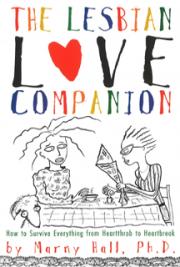56.8
68.2
Somewhat exciting
13.0
13.6
Neutral
10.5
4.5
Somewhat unpleasant
8.0
4.5
Very unpleasant
6.8
9.1
Unsure
4.9
—
Source: Jacobo Schifter and Johnny Madrigal, Hombres que Aman Hombres, San José, ILEP-SIDA, 1992.
115
TABLE 7
INVENTORY OF SEXUAL PRACTICES AND AVERAGE
NUMBER OF OCCURRENCES IN THE PAST 30 DAYS
(in percent)
Variable
Gay
Transvestite
sex trade
workers
(N)
(162)
(22)
TOTAL
100
100
Have you penetrated a woman
through the anus
Without ejaculation
—
4.6
Until ejaculation
—
—
With condom
—
—
Without condom
—
4.6
Removing the penis before
ejaculation
—
4.6
Have you penetrated a man?
Without ejaculation
29.0
72.7
Until ejaculation
53.7
72.7
With condom
49.4
86.4
Without condom
22.8
40.9
Removing the penis before
ejaculation
17.3
45.4
Have you been penetrated by a
man?
Without ejaculation
23.5
56.4
Until ejaculation
42.6
77.3
With condom
40.7
95.5
Without condom
17.9
45.5
Removing the penis before
ejaculation
16.7
40.9
Have you penetrated a woman
through the vagina?
Without ejaculation
0.6
4.6
Until ejaculation
1.2
—
With condom
0.6
—
Without condom
1.2
—
Removing the penis before
ejaculation
—
4.6
Source: Jacobo Schifter and Johnny Madrigal, Hombres que 116
Aman Hombres, San José, ILEP-SIDA, 1992.
117
TABLE 8
INVENTORY OF SEXUAL PRACTICES DURING THE
PAST SIX MONTHS (in percent)
Variable
Gay
Transvestite
sex trade
workers
(N)
(162)
(22)
TOTAL
100
100
Have you penetrated a woman
through the anus
Without ejaculation
0.6
9.1
Until ejaculation
0.6
—
With condom
1.2
—
Without condom
0.6
4.5
Removing the penis before
ejaculation
1.2
4.5
Have you penetrated a man?
Without ejaculation
61.1
86.4
Until ejaculation
75.9
90.9
With condom
73.5
90.9
Without condom
37.0
50.5
Removing the penis before
ejaculation
38.9
72.7
Have you been penetrated by a
man?
Without ejaculation
56.2
86.4
Until ejaculation
65.4
86.4
With condom
27.9
95.5
Without condom
37.7
59.1
Removing the penis before
ejaculation
37.7
72.7
Have you penetrated a woman
through the vagina?
Without ejaculation
4.3
4.5
Until ejaculation
5.6
—
With condom
4.3
—
Without condom
4.9
—
Removing the penis before
ejaculation
3.1
—
118
TABLE 8
INVENTORY OF SEXUAL PRACTICES DURING THE
PAST SIX MONTHS
(in percent
(CONTINUED)
Variable
Gay
Transvestite
sex trade
workers
Have you orally stimulated...
A woman?
1.2
—
A man?
61.1
50.0
Have you been orally stimulated
by...
A woman?
3.7
4.5
A man?
76.5
95.5
Source: Jacobo Schifter and Johnny Madrigal, Hombres que Aman Hombres, San José, ILEP-SIDA, 1992.
9
The Lovers of Libano
If one is to explain the upsurge of AIDS diagnoses among transvestites in recent years, one issue that warrants careful attention is the sort of love relationships in which these men have been engaged. Quite simply, while acknowledging transvestites‟
versatility with their clients and their frequent use of condoms, in the past there has been considerable reticence among their lovers (a high proportion of whom were from San José‟s Libano district) to adopt safe sex practices themselves, a fact confirmed when we interviewed several such individuals in 1990. However, as the number of clients hailing from Libano has decreased over the course of the past ten years, it is expected that this will have a positive effect on the incidence of safe sexual practices among transvestites. Nevertheless, there can little doubt that their particular world-view has had an impact upon the AIDS epidemic in the past, and indeed continues to have one, given that there are still some Libano men among transvestites‟ roster of clients.
Who are they?
119
The gender construction of the men who were the transvestites‟
lovers in the 1980s was strongly masculine. In our interviews with them, it was clear that, despite enjoying an intimate relationship with a transvestite, they identified closely with the „macho‟
understanding of gender and sexuality. Moreover, their lifestyle was similar to that of any other Costa Rican heterosexual male: married with children, attracted to stereotypically feminine qualities. They did not recall any childhood feelings of being either „different‟ or attracted to their own sex, as typically occurs with men who are gay. In the interviews, there was no evidence to suggest that they felt any attraction to men other than their transvestite lovers.
For the most part, the clients interviewed were blue-collar workers with very low incomes and little formal education. Juan Carlos sold Jell-O at a local market and made roughly 400 (US$4) colones a day; he had formerly worked as a mechanic and shoe-maker.
Delio was an unemployed construction worker who had left school after the sixth grade. Pablo had worked as an accountant in a warehouse, but was currently out of work and had turned to petty theft. Louis worked as a sales clerk in a hardware shop and earned 3,600 colones (US$36) per week.. David had completed his second year of high school, and was currently employed as a butcher for roughly 5,000 colones (US$50) per week.
At the time of the interviews, several of these men were being supported by their transvestite lovers. For example, Moses said that he was with Monique „for the money‟, while Pablo, who was financially dependent upon Paula, said that he felt uncomfortable with this arrangement and that he had also supported her in the past. Meanwhile, all of Ricardo‟s living expenses were paid for out of Felicia‟s earnings and, in the case of Delio, he reported receiving some money from Corina because he was out of work.
However, this is not to say that all of the men interviewed were dependent upon their lovers for support. David, for one, used to give 1,000 colones to his transvestite partner, while Daniel and Miguel, who both lived with Rita, helped her out by handing over a portion of their wages.
The majority of the men interviewed made at least some use of drugs and/or alcohol. Pablo drank beer, consumed marijuana and cocaine, all the while living off Paula‟s earnings. Delio regularly spent 5,000 colones on beer, cocaine and marijuana, even though 120
he was unemployed. Juan Carlos drank beer and snorted cocaine, and spent roughly 500 colones a day on marijuana (despite the fact he was only earning 400 colones per day). Indeed, only Felicia‟s partner, Ricardo, and Laura‟s boyfriend, José, stated that they did not consume any drugs at all, though José did admit that he engaged in regular bouts of binge drinking.
For some, drifting away from heterosexuality was easy The life-histories of the men who were the transvestites‟ lovers reveal that for the most part they had been unambiguously heterosexual prior to their involvement with a transvestite. Some, such as José, were married and had children. Meanwhile, Miguel had had five heterosexual relationships before meeting Rita, while Daniel had also been with women prior to commencing a series of relationships with transvestites two years previously. David was 29 years old and had been in a transvestite relationship for the past five years; before this, he had only had heterosexual encounters, with two children being their legacy. Finally, Moses, who was currently in a relationship with a transvestite, had had both male transvestite and female lovers in the past.
However, despite prior heterosexual activity, all those interviewed said that they were very satisfied with their transvestite relationships and most, Delio and Louis excepted, no longer engaged in any sexual activity with women at all. When asked why this was the case, a similar reason was given by all: that greater pleasure was derived from a transvestite relationship, due to the fact that transvestites tended to be warmer, more passionate, sexier and tighter than most women.
In the transvestite’s world, the penis does not make the man
Even though transvestites are men, as are their partners, it should be emphasized that transvestite culture differs markedly from that of the gay community in Costa Rica more generally. In large measure, this might be understood in terms of the highly particularistic meaning attributed to gender by transvestites and their lovers alike. In short, „femaleness‟ is subsumed under
„femininity‟ in order to produce transvestites who are, as far as their clients and lovers are concerned, women, regardless of the fact that they happen to possess a male sexual organ.
Thus, for the male partner of a transvestite, his involvement with the latter is perceived in purely heterosexual terms: he is a man and his partner is a woman. At a more basic level, this is expressed in 121
the assertion, often heard among the men interviewed, that he was the one who engaged in penetration during anal sex. Furthermore, this is also heard in many of the men‟s comments. For example, Paula‟s partner Pablo stressed that he is the „man in the relationship.‟ Melvin said that he is so masculine that he does not even want to see the penis of his lover Lina. In this way, one might argue that unwillingness on the part of these men to acknowledge their lovers‟ sexual organ is closely related to their reticence to see themselves either as johns or as homosexual.
However, it should be noted that others stated that even though they were the active partner in anal sex, it did not bother them that their partner was endowed with a penis, with Ricardo even going so far as to say that he liked it because „it was different.‟ Still, most denied ever having been penetrated themselves: Shasta‟s partner Jorge stated that „I play the role of the male and she the female‟; Moses emphasized that it is he who „screws Monique‟, as did Juan Carlos. The only exception in this regard was Daniel, who admitted to having been penetrated by Rita.
Most defined themselves as ‘ cachero’
Thus, it is clear that most of the interview participants defined their
„manhood‟ in terms that did not differ significantly from heterosexual men more generally. Being a man entailed „screwing‟
women or other men. It is for precisely this reason that most of the men interviewed did not feel that they were gay and why they did not participate in any of the latter‟s social activities. While some saw themselves as bisexual, others as either exclusively heterosexual or homosexual, most defined themselves as
„ cachero‟. This is a word that can mean many things.
As is noted above, Pablo saw himself as the man and Paula the woman; by no means did he consider himself a man who liked other men, even though he admitted to being bisexual. In similar fashion, Jorge defined himself as heterosexual, as did Moses, who used the word „ buga‟ when talking about himself, Costa Rican slang for „straight‟. Significantly, Ricardo was the only man interviewed who deemed himself to be homosexual; all the others saw themselves as cachero. Juan Carlos defined this term as an individual who has sex with homosexuals yet is not one himself.
For Louis, it was a man who sleeps with both men and women; while for David, it was „a man who screws queers‟. Finally, Delio and Miguel defined it as one who gives pleasure to others of the same sex, while Melvin suggested that it was a homosexual who acts like other men.
122
Significantly, it was not only the partners of transvestites who did not consider themselves to be homosexual; the transvestites interviewed did not deem themselves to be gay either. This view is underscored by the fact that 91% of transvestites (as compared with 13% of gay bar patrons) interviewed were in complete agreement with the statement, „it is better that one‟s lover be heterosexual‟; another, smaller group, were somewhat in agreement with this statement. This in turn would explain not only why transvestites preferred to become involved with men who saw themselves as heterosexual rather than homosexual, but also why they did not feel they belonged to a group that was at high risk of HIV infection46.
46
Jacobo Schifter and Johnny Madrigal, Hombres que Aman Hombres, San José, Ilep-Sida, 1992.
123
Partners’ knowledge of AIDS
From the outset, it must be acknowledged that the transvestites‟
lovers were aware of the serious consequences associated with contracting AIDS. Juan Carlos knew that AIDS was a threat
„because one is so close to the problem.‟ Both Jorge and Moses were aware that HIV is transmitted through sexual contact and the exchange of bodily fluids, and that a condom is the only protection. Interestingly however, while both José and David also indicated that they knew of the dangers associated with HIV
infection, they went on to stress that they themselves generally did not use condoms.
This is an important point, because it underlines the fact that although the transvestites‟ lovers are to some extent knowledgeable about HIV and AIDS, limited schooling and low income have conspired to deprive them of the tools needed to take preventative action. As the findings of Costa Rica‟s National AIDS Survey47 suggest, it is precisely those who are poorly educated and low waged who are most adverse to condom use.
Moreover, in the particular case of the transvestites‟ lovers, this reticence is aggravated in turn by the effects of drug addiction.
How so? As has already been suggested above, the majority of partners were regular users of one or more drugs, and these drugs tended to be expensive, costing from 1,000 to 12,000 colones per week. Given the paucity of their own wages, this in turn served to make them dependent upon their lovers, particularly if they were also attempting to support a second household or had children.
When one combines financial dependence with frequent intoxication, the net effect is of course to place these individuals at high of contracting HIV, since they are not in a position to make an informed choice about safe sex and other high risk activities.
47
Johnny Madrigal and Jacobo Schifter, Primera Encuesta Nacional de SIDA, San José, ADC, 1990.







